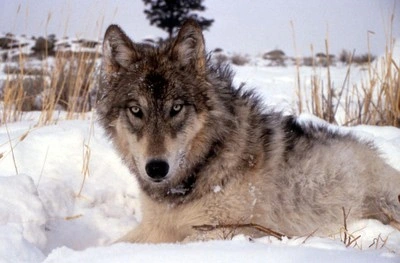The wolf – a winner of the breakdown of the Soviet Union
HU Biogeography Group analyses trends of mammal populations after the end of the Eastern Bloc
The breakdown of the Soviet Union constitutes one of the most dramatic institutional and socioeconomic shocks of the 20th century. A new paper, led by Eugenia Bragina and just published in Conservation Biology, suggests that large mammal populations in Russia may have been hit hard by the breakdown of the Soviet Union. Most most populations declined during the 1990s, likely a result of overexploitation, while wildlife populations appear to having rebounded after 2000.
Rapid declines of large mammal populations after the collapse of the Soviet Union
Eugenia V. Bragina | Anthony R. Ives | Anna M. Pidgeon | Tobias Kuemmerle | Leonid M. Baskin | Yuliy P. Gubar | Maria. Piquer-Rodriguez | Nicholas S. Keuler | Varos G. Petrosyan | Volker C. Radeloff
Anecdotal evidence suggests that socioeconomic shocks strongly affect wildlife populations, but quantitative evidence is sparse. The collapse of socialism in Russia in 1991 caused a major socioeconomic shock, including a sharp increase in poverty. We analyzed population trends of 8 large mammals in Russia from 1981 to 2010 (i.e., before and after the collapse). We hypothesized that the collapse would first cause population declines, primarily due to overexploitation, and then population increases due to adaptation of wildlife to new environments following the collapse.
The long-term Database of the Russian Federal Agency of Game Mammal Monitoring, consisting of up to 50,000 transects that are monitored annually, provided an exceptional data set for investigating these population trends. Three species showed strong declines in population growth rates in the decade following the collapse, while grey wolf (Canis lupus) increased by more than 150%.
After 2000 some trends reversed. For example, roe deer (Capreolus spp.) abundance in 2010 was the highest of any period in our study. Likely reasons for the population declines in the 1990s include poaching and the erosion of wildlife protection enforcement. The rapid increase of the grey wolf populations is likely due to the cessation of governmental population control.
In general, the widespread declines in wildlife populations after the collapse of the Soviet Union highlight the magnitude of the effects that socioeconomic shocks can have on wildlife populations and the possible need for special conservation efforts during such times.
Link to the mansucript: DOI: 10.1111/cobi.12450
Citation: Bragina, E.V., Ives, A.R., Pidgeon, A.M., Kuemmerle, T., Baskin, L.M., Gubar, Y.P., Piquer-Rodriguez, M., Keuler, N.S., and Radeloff, V.C. (2015): Rapid declines of large mammal populations after the collapse of the Soviet Union. Conservation Biology, in press.
This research was very welcomed by the scientific community and was
featured in Science, BBC news, the main Swedish newspaper Dagens Nyheter
and ConservationBytes blog:
Contact
Prof. Dr. Tobias Kümmerle
Geography Department
Humboldt-Universität zu Berlin
Tel.: 030 2093- 9372
tobias.kuemmerle(at)geo.hu-berlin.de
